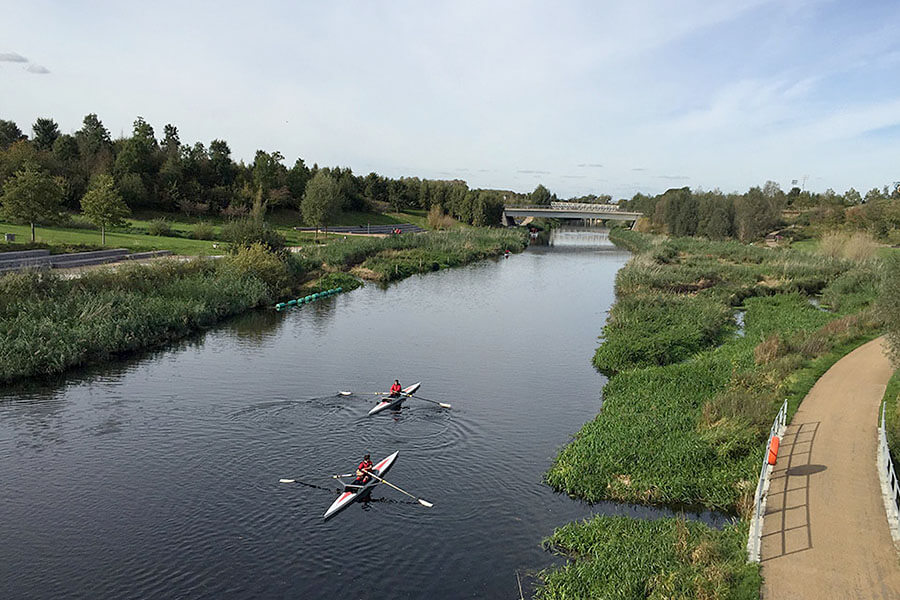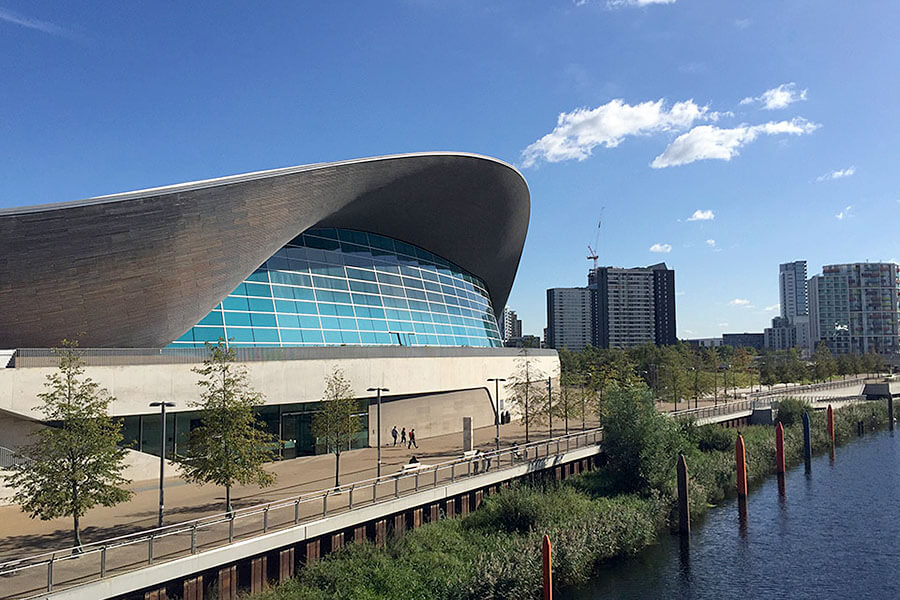Using the legacy of the London Games to create a sustainable urban precinct
As the former site of the 2012 London Olympic Games, Queen Elizabeth Olympic Park is the largest urban park built in the UK in the past century.
The creation of a regional park and the rehabilitation of the Lea Valley, including the restoration of the River Lea, were at the heart of the design of this major urban renewal project.
The park provides a network of open space to support existing residents as well as five new neighbourhoods with 10,000 homes to be built by 2030.

Thinking beyond the Games
From the outset of London’s bid for the 2012 Olympic Games, strategic planning for the site considered the post-Games landscape. The initial master planning process was innovative in its emphasis on renewal and transition beyond the Games by accommodating future urban neighbourhoods.
The project leverages the physical legacy of the Games to create a new city park and sustainable urban quarter delivered through the dedicated governance of the London Legacy Development Corporation.
Renewing a neglected city quarter
Before the Games, the site located on the Lea Valley floodplain was a largely neglected part of London, previously industrial, comprising heavily contaminated land, and fragmented by arterial roads and river tributaries.
Renewal works rehabilitated the river system and structured new parkland around a naturalised, wildlife-focused “north park” and civic and community focused “south park”.
There are multiple places to visit and a carefully designed network of cycleways, pedestrian paths, and bridges connecting riverfront walks, meadows, fields, gardens, boulevards, amphitheatres, playgrounds, kiosks, exercise stations, and sculptures.

Delivering sustainable development
Queen Elizabeth Olympic Park achieves specific commitments established in the Olympic Delivery Authority’s Sustainable Development Strategy. The commitments included ensuring all buildings are completely accessible by public transport, walking, and cycling. Meeting biodiversity and ecology targets required providing 45 hectares of habitat, and generating renewable energy on site.
A holistic approach to the site’s evolving life has ensured this comprehensive strategy has been achieved, not only through the design of the park but also through its ongoing operation.

Prioritising people and ecology
The parklands extend the Lea Valley Regional Park, a key ecological corridor and part of London’s green infrastructure network. The park performs numerous environmental functions, including improving water quality, mitigating flood waters, and providing animal habitat.
By improving connections to surrounding neighbourhoods and ecosystems, as well as encouraging walking and cycling for short local journeys, the park prioritises human and ecological heath.
The park is a demonstration of the power of good design – how it can solve so many problems. It’s a multifunctional landscape. There is the ability, through great design, to weave together the needs of wildlife with the needs of people.
John Hopkins FLI, Project Sponsor Olympic Delivery Authority 2007-2011
Lessons learnt
Well-designed public parkland can play a pivotal role in urban redevelopment, providing vital infrastructure, supporting biodiversity and extending habitat, attracting other development, creating an identity, and connecting newly conceived and renewed spaces to the larger city open space network.
With long-term sustainability as a principle for design decision-making, the infrastructure for major events such as Olympic Games can become a catalyst for large-scale urban renewal, with benefits far beyond the life or footprint of the event.
